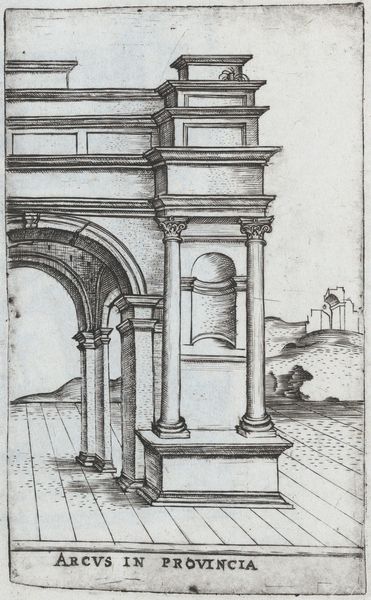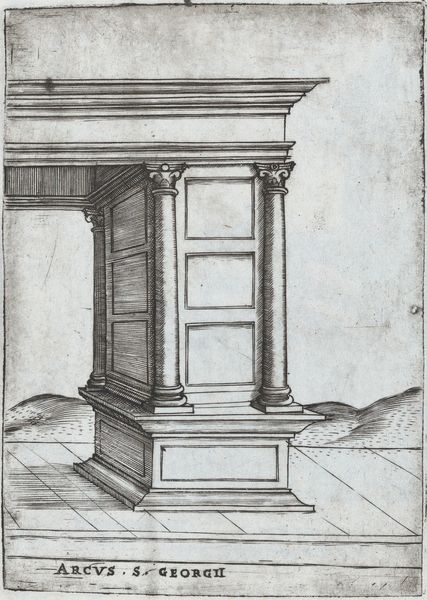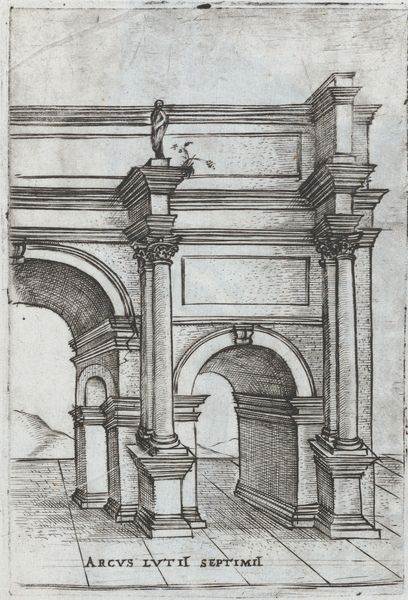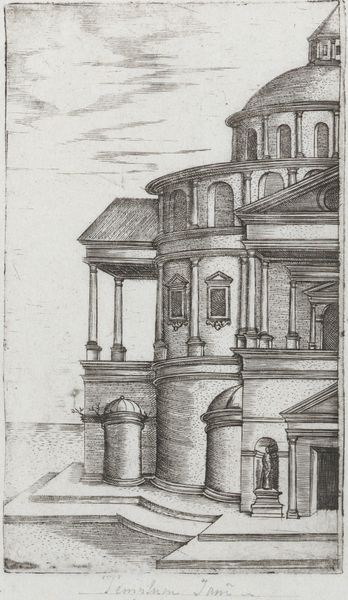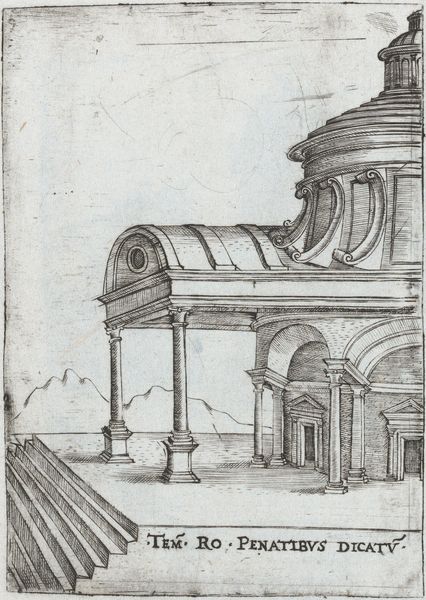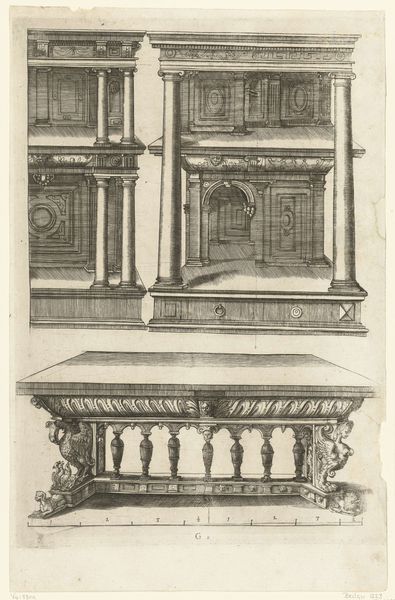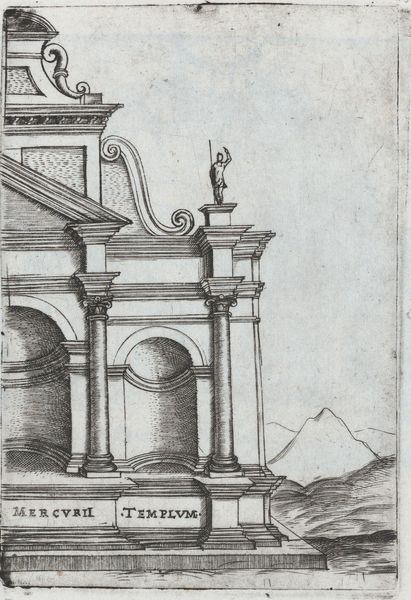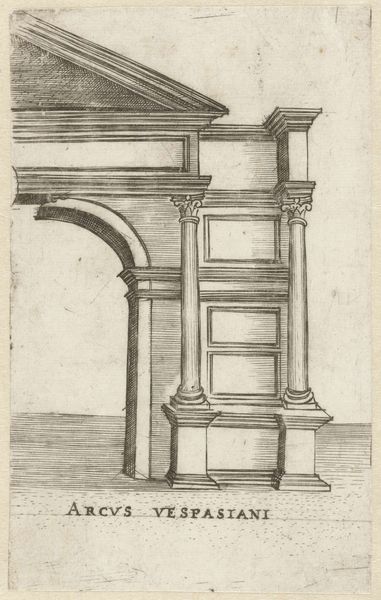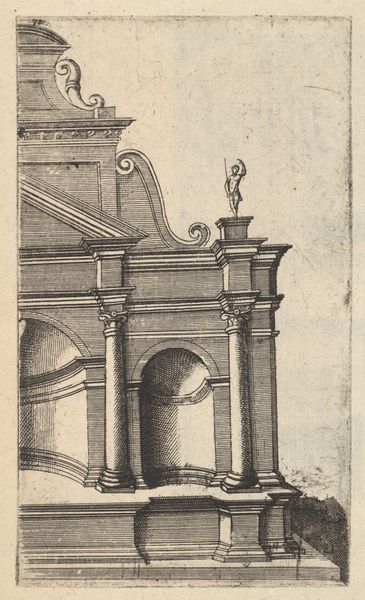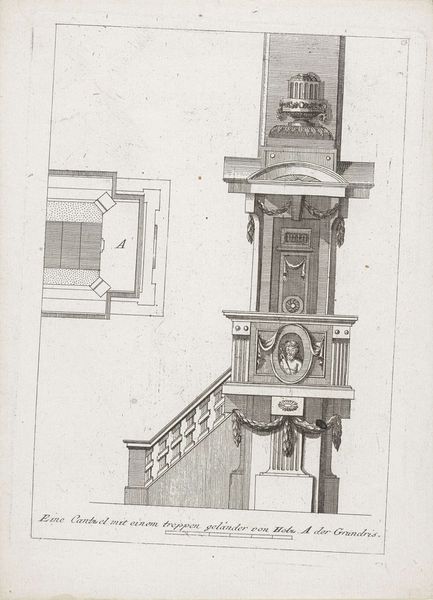
Palatium Maius Ro, from a Series of Prints depicting (reconstructed) Buildings from Roman Antiquity 1530 - 1550
0:00
0:00
drawing, print, engraving, architecture
#
drawing
# print
#
geometric
#
italian-renaissance
#
engraving
#
architecture
Dimensions: Plate: 4 1/2 × 6 1/4 in. (11.5 × 15.8 cm) [top left corner cut; edges of the plate are not straight, height of the plate varies from 11.5 to 9.5cm and the width from 15.8 to 14.1]
Copyright: Public Domain
Editor: This is a print entitled *Palatium Maius Ro, from a Series of Prints depicting (reconstructed) Buildings from Roman Antiquity*, dating from 1530 to 1550, and it's attributed to Monogrammist G.A. & the Caltrop. It seems to be made using engraving techniques. My first impression is how architectural it is, yet fragmented. What stands out to you most when you look at this work? Curator: Immediately, the emphasis on line and form seizes my attention. The meticulous engraving delineates the architectural structure with a stark clarity, privileging geometry and proportion. The very medium – a print – further abstracts the original architectural reality. What structural relationships do you observe? Editor: I notice how the columns relate to the arch. One is curved, the other rectilinear. How would you analyze the relationship of forms? Curator: Observe how the arch’s curve is juxtaposed against the rigid lines of the entablature and rectangular panels. The composition balances organic and geometric shapes, generating a visual tension. The differing textures achieved through engraving – consider the subtle gradations within the arch versus the precise hatching on the flat surfaces – augment this contrast. Does this juxtaposition invite specific interpretations? Editor: Maybe the artist is pointing to nature versus artifice. Curator: A compelling possibility. The print could be read as an inquiry into the principles of Renaissance architecture, deconstructing classical ideals through the deliberate use of line, form, and their relationships. Considering that it's part of a series, could we extrapolate insights regarding Renaissance artistic and intellectual inclinations from the structural relationships exhibited in this work? Editor: I never would have considered the series. I can appreciate now how the artist deconstructed and presented classical ideas through form and line. Curator: Indeed. Considering formal attributes enriches our perception of this and similar Renaissance-era prints.
Comments
No comments
Be the first to comment and join the conversation on the ultimate creative platform.
